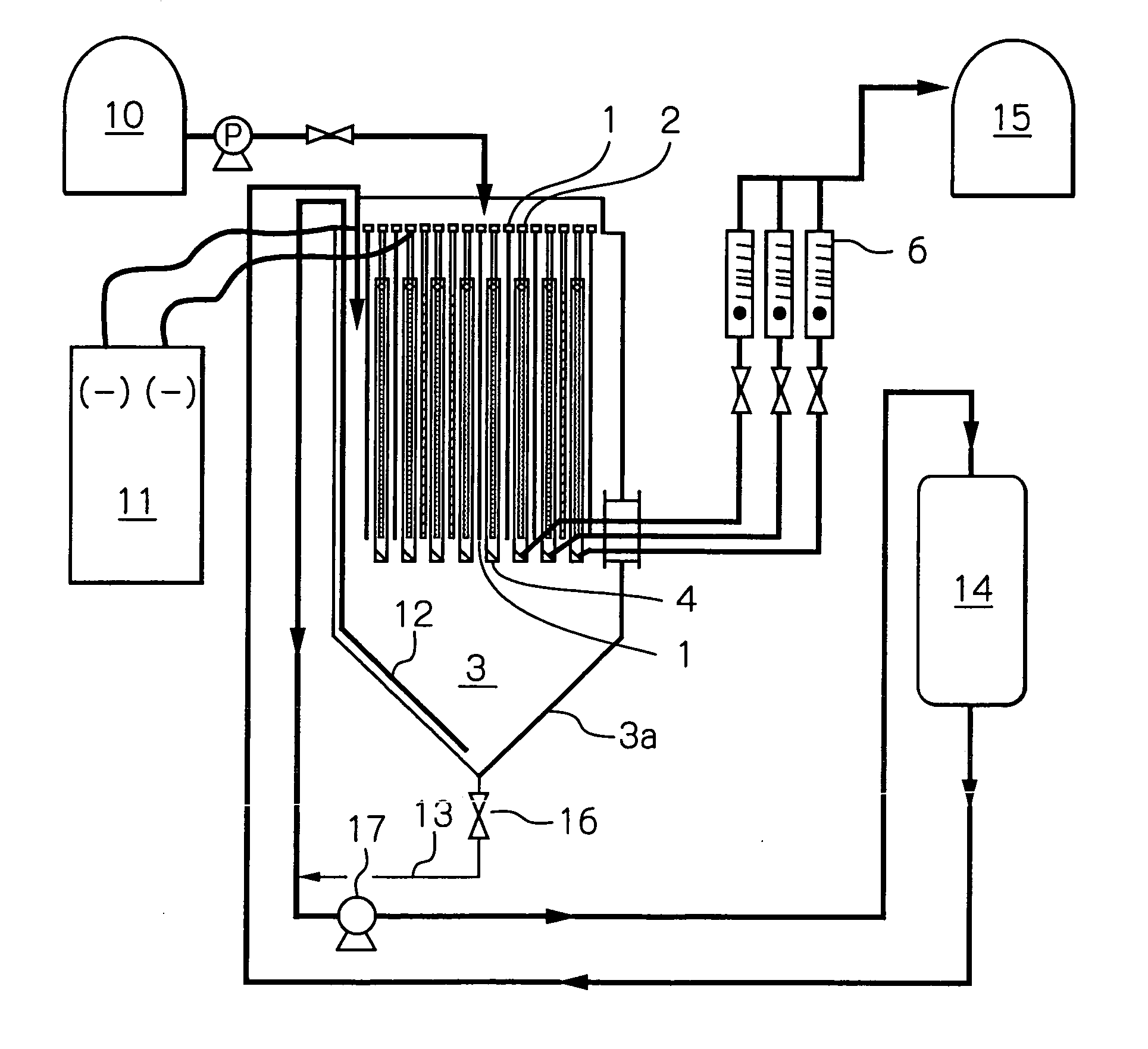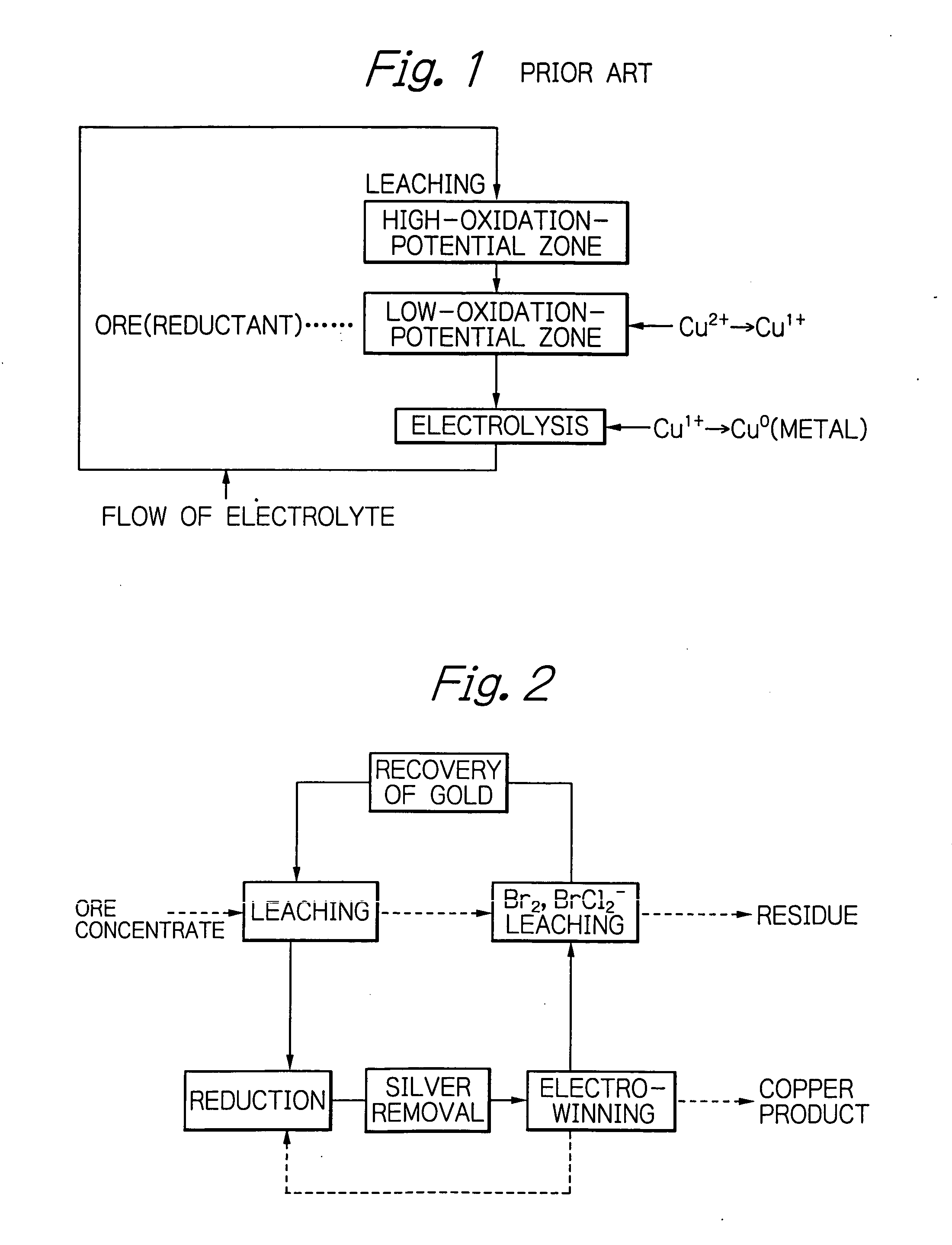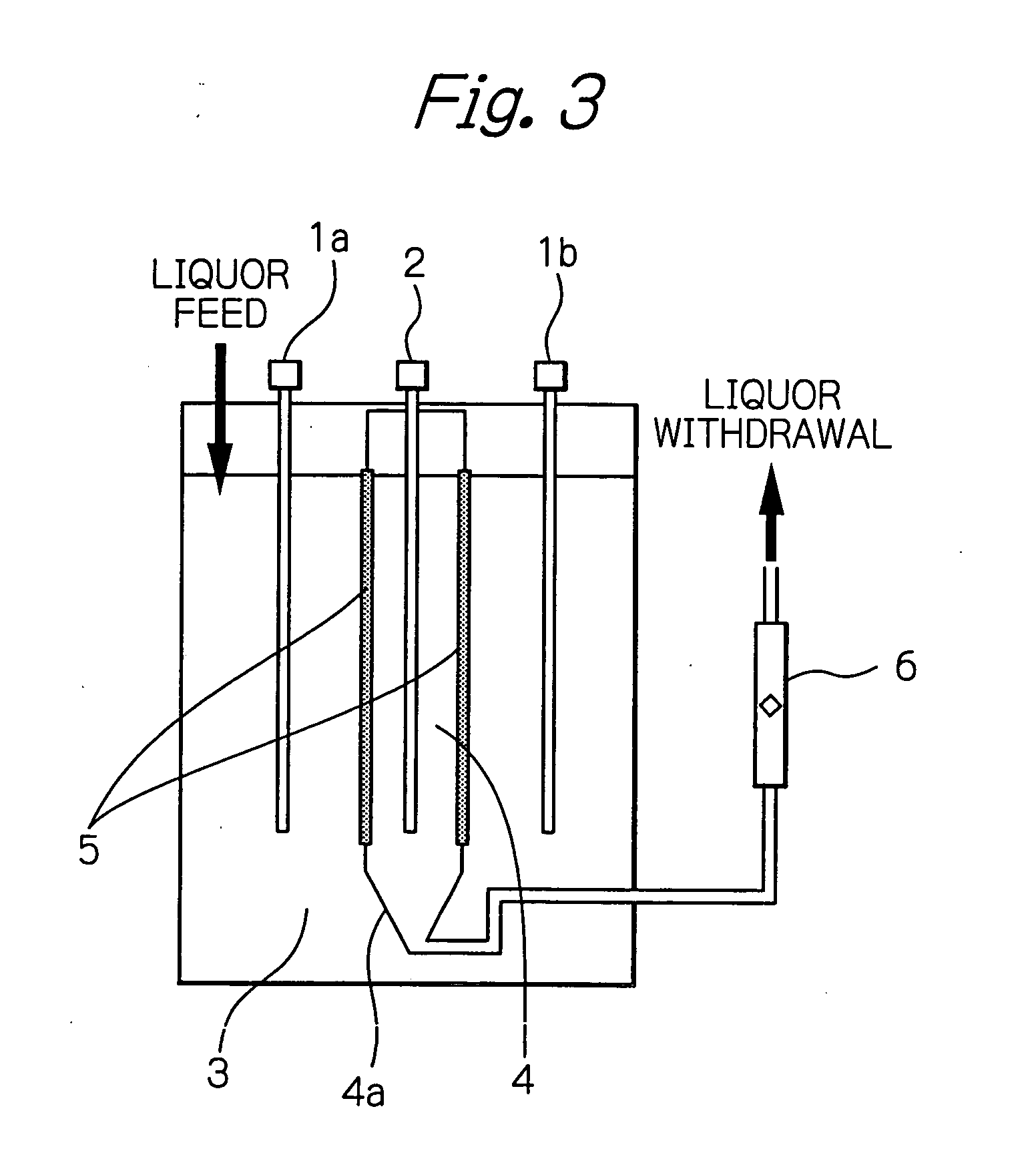Electrolytic method in diaphragm-type cell
a diaphragm-type cell, electrolysis technology, applied in the direction of electrolysis components, instruments, optics, etc., can solve the problems of difficult to exist in the form of dissolved cl, difficult to obtain soluble cl, difficult to leach precious metals, etc., to achieve enhanced leaching efficiency of hard-to-leach precious metals, low reaction efficiency, and high reaction efficiency
- Summary
- Abstract
- Description
- Claims
- Application Information
AI Technical Summary
Benefits of technology
Problems solved by technology
Method used
Image
Examples
example 1
[0041] The leaching of the chalcopyrite and electrolytic winning of copper were carried out by the flow as shown in FIG. 2. Leaching of Cu2+ and the Br2 and BrCl2− leaching shown in the flow chart of FIG. 1 were carried out under the conditions of Example 1 of the U.S. patent. Recovery of Au was carried out following Example 3 of the U.S. patent.
[0042] In the flow chart of FIG. 2, the solid line indicates the flow of liquor, while the dotted line indicates the flow of solid. The copper product of the electro-winning step is partially returned to the reduction step, where Cu2+ is reduced to Cu1+ by using the copper product. The returned Cu1+ causes the cementation of Ag. The Ag concentration was decreased to slightly less than 20 mg / L in the reducing step.
[0043] The electrolysis was carried out using an electrolytic cell shown in FIGS. 3 and 4. The eight anodes 2 used were DSA (dimension stable anode) 1300×250×3 mm in size. The nine cathodes 1 used were Ti plate of the same size as...
PUM
| Property | Measurement | Unit |
|---|---|---|
| oxidation-reduction potential | aaaaa | aaaaa |
| oxidation-reduction potential | aaaaa | aaaaa |
| concentration | aaaaa | aaaaa |
Abstract
Description
Claims
Application Information
 Login to View More
Login to View More - R&D
- Intellectual Property
- Life Sciences
- Materials
- Tech Scout
- Unparalleled Data Quality
- Higher Quality Content
- 60% Fewer Hallucinations
Browse by: Latest US Patents, China's latest patents, Technical Efficacy Thesaurus, Application Domain, Technology Topic, Popular Technical Reports.
© 2025 PatSnap. All rights reserved.Legal|Privacy policy|Modern Slavery Act Transparency Statement|Sitemap|About US| Contact US: help@patsnap.com



